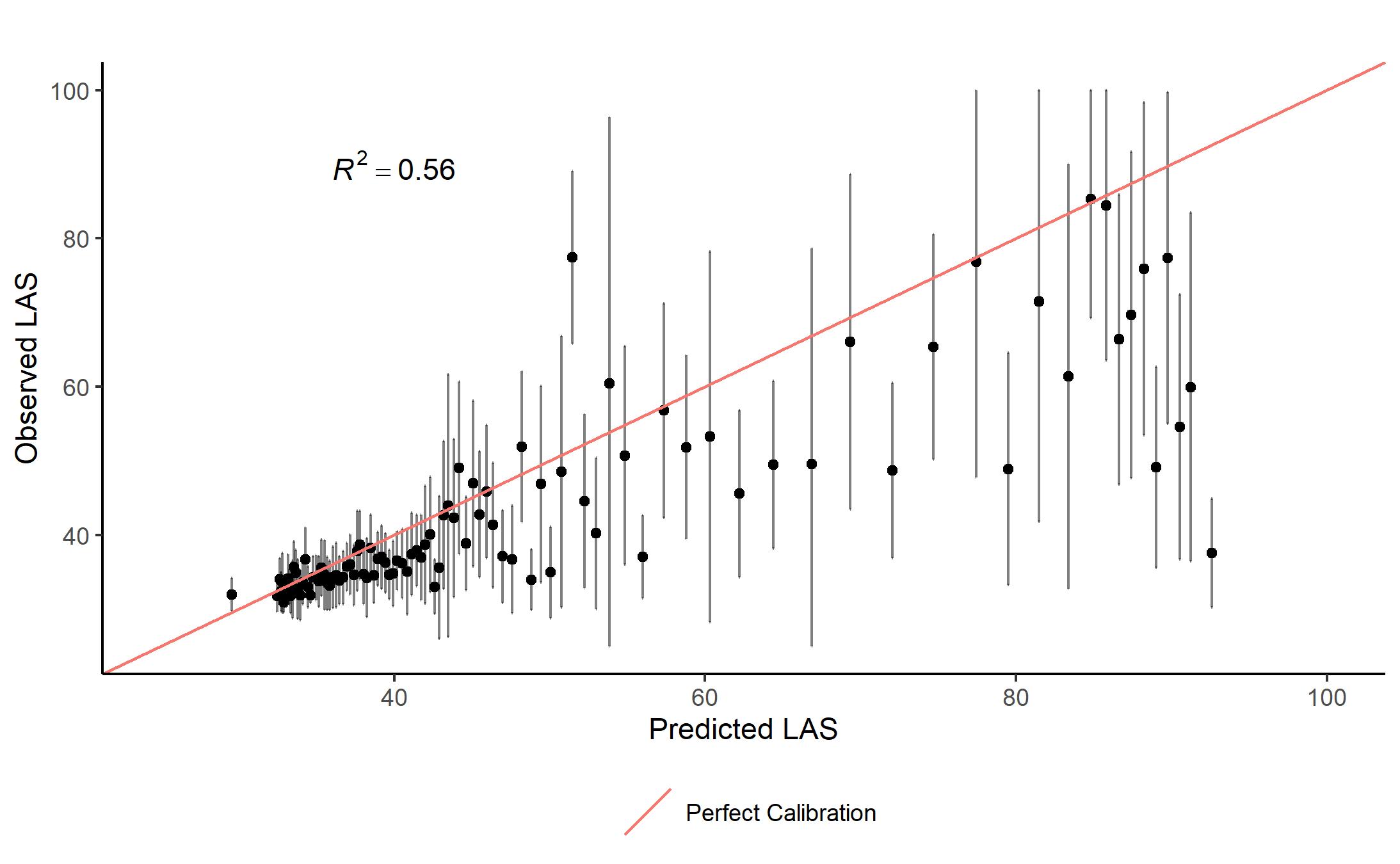Assessing the Accuracy of the Lung Allocation Score
N. Dussault1, W. Parker1, R. Jablonski1, E. Garrity1, M. Churpek2
1University of Chicago, Chicago, IL, 2University of Wisconsin-Madison, Madison, WI
Meeting: 2021 American Transplant Congress
Abstract number: 93
Keywords: Allocation, Ethics, Lung transplantation
Topic: Clinical Science » Lung » Lung: All Topics
Session Information
Session Name: How to Expect the Unexpected- Incorporating Predictors into Lung Transplant Decision Making
Session Type: Rapid Fire Oral Abstract
Date: Saturday, June 5, 2021
Session Time: 6:00pm-7:00pm
 Presentation Time: 6:10pm-6:15pm
Presentation Time: 6:10pm-6:15pm
Location: Virtual
*Purpose: The Lung Allocation Score (LAS) relies on the performance of two cox proportional hazards models that estimate waitlist and post-transplant survival. These models were developed using data from 2005-2008; it is unknown if they remain accurate.
*Methods: This was an observational cohort study of all lung transplant candidates and recipients greater than 12 years listed or transplanted between February, 19th 2015 to February, 19th 2019 in the Scientific Registry of Transplant Recipients database. We evaluated the discrimination of the waitlist and post-transplant models with the concordance probability estimate and the calibration of each model by comparing predicted versus observed one-year restricted mean survival times. We evaluated the overall accuracy of the LAS by comparing a non-parametric estimate of the observed LAS with the actual LAS at transplant for each recipient percentile.
*Results: During the study period, 11,539 eligible candidates were listed for transplant and 9,377 eligible recipients were transplanted. The waitlist model ranked candidates in the correct risk order 72% of the time (95% CI 71 – 73%) and underestimated survival by 59 days (95% CI 57 – 61 days) on average. The miscalibration increased from 6 days of error (95% CI 4 – 9 days) in the lowest risk decile to 136 days (95% CI 107 – 164 days) in the highest risk decile. The post-transplant model ranked recipients in the correct risk order 57% of the time (95% CI 55 – 58%) and underestimated post-transplant survival by 25 days (95% CI 23 – 27 days) on average. The miscalibration increased from 10 days of error in the lowest risk decile (95% 7 – 14 days) to 70 days (95% CI 64 – 77) in the highest risk decile. Overall, a recipient’s LAS at transplant explained only 56% of variation in the observed LAS.
*Conclusions: The waitlist and the post-transplant models that form the backbone of the LAS are inaccurate, limiting the ability of the system to rank candidates in the correct order. The LAS should be updated using a modern cohort patient cohort.
To cite this abstract in AMA style:
Dussault N, Parker W, Jablonski R, Garrity E, Churpek M. Assessing the Accuracy of the Lung Allocation Score [abstract]. Am J Transplant. 2021; 21 (suppl 3). https://atcmeetingabstracts.com/abstract/assessing-the-accuracy-of-the-lung-allocation-score/. Accessed December 14, 2025.« Back to 2021 American Transplant Congress

